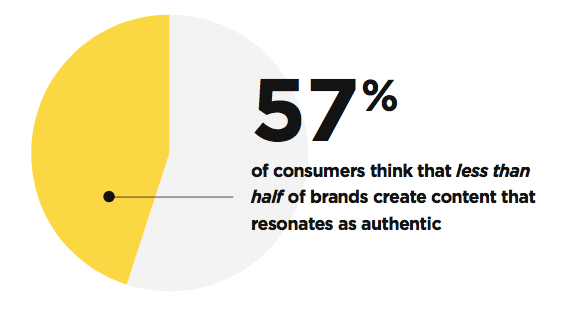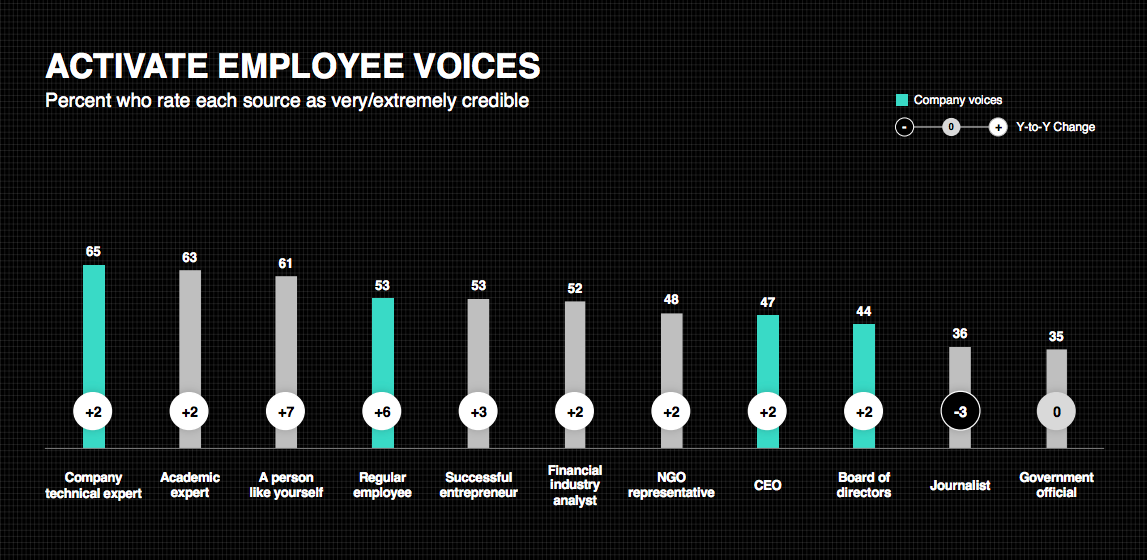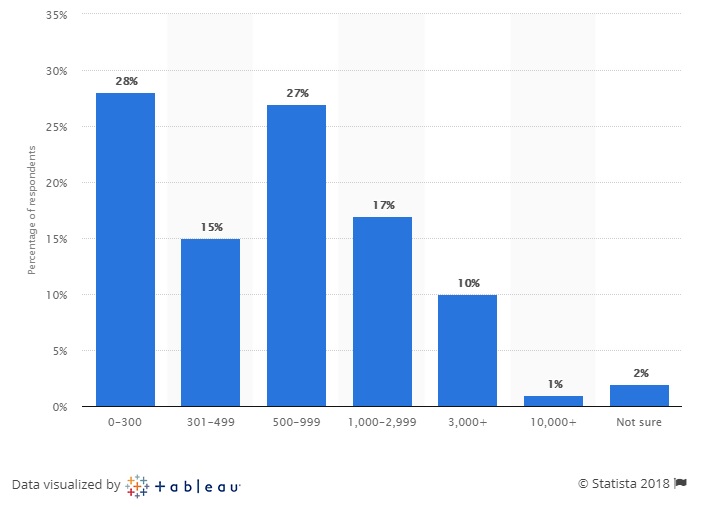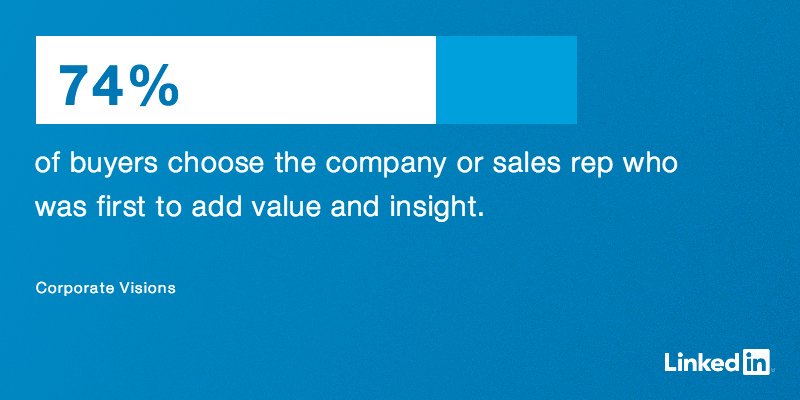When you Google your company, what comes up?
The results that show up are going to shape the first impression people have of your brand. Is the information you’re sharing online relevant and consistent?
Whether you know it or not, your audience is looking up your company online. Chances are that they’re also looking up the people who work for your company. So the question is, do your employees have a presentable and authentic professional and personal brand? With the rise of social media in B2B, it is now important for employees to embrace being a brand.
Your company no longer owns the brand.
How your employees present themselves to the world is now an extension of the brand. Having your employee be a major part of your brand strategy can propel the business and your employees as well.
Finding out what comes up when you Google your company simply isn’t enough. It now matters what shows up when you search your employees. More importantly on what shows up on social networks like LinkedIn and Twitter.
Include Employees in Your Brand Strategy
Building a strong employee brand strategy doesn’t take a multi-million dollar advertising budget like Apple, Nike or Coca-Cola. What’s special about a personal brand is that it is specific to the individual and what they represent.
A strong corporate and personal brand share similar traits such as having a strong vision, mission, and values.
In B2B, there’s a higher likelihood of developing a customer relationship through frontline employees which is different compared to B2C. Each interaction is a chance for your brand to reflect itself through your employees – hopefully in a positive light.
This is why employees should become the voice of the brand or what’s known as employee advocacy.
What is Employee Advocacy?
Employee advocacy is defined as an organization promoting itself and its brand through its employees. This could be through the form of company or product information, industry insights or about the company culture online. The most common medium for employee advocacy is social media. With over two-thirds (67%) of Americans turning to social media as their primary source for news and events, it just makes sense to promote the brand where your customers are consuming content.
Even in the B2C world, the brand Lush removed all of their corporate social media channels. The move was made to help open up conversations between the brand and its customers.
In their announcement, they stated “Lush has always been made up of many voices, and it’s time for all of them to be heard. We don’t want to limit ourselves to holding conversations in one place, we want social to be placed back in the hands of our communities – from our founders to our friends.”
It’s too early to tell what the effects for Lush but hearing from the employee voice through the CEO and their employees is noteworthy. Along with the rise of influencer marketing, your employees’ personal brand at a micro-level is now more relevant.
Benefits of Employees Building a Personal Brand
Amongst the many benefits of helping your employees build their personal brand, here are the top three.
Build Trust and Authenticity
To win the hearts and minds of customers, building trust and authenticity is a cornerstone of a strong brand strategy. Being authentic means upholding your brand promise. Customers are smart so they can spot inauthenticity from a mile away. The authenticity gap is clear because consumers feel that they’re lacking. According to Stackla’s 2017 Consumer Content Report, they found that 57% of consumers think that less than half of brands create content that resonates authentically.

In the same report, Stackla found that eighty-six percent of people say authenticity matters when deciding what brands they like and support. So how can employees be authentic? Allow them to align their thoughts with your content. If they’re sharing content on social media, give them a choice to add context to the content. This can be done in the form of proposing a question to their audience or calling out what they find interesting about an article.
You can also allow employees to be a part of content creation. Provide them with tools to find and suggest content because the chances are that other employees will find the same content useful.
Engage an Active Audience, Not A Follower Count
Collecting followers across have become scorekeeping – which unfortunately is an unintended consequence of using social networks. The value of social media creates tangible connections made based on relationships built online. I think social media has lost a sense of empathy where follower counts mean more than real engagement.
According to Forrester’s 2018 Customer Experience Index, brands that want to break away from the pack should focus on emotion, as to how an experience makes customers feel has a bigger influence on their loyalty to a brand than effectiveness or ease in every industry.
As your employees build their personal brand on social media, they have to focus on micro-followings or niche audiences. For example, if your frontline employees are focused on a region, industry or solution, they’ll have to build a relevant following.
The content and messages they share and the people they engage with have to align around a specific focus. Similar to a website, the quantity of traffic doesn’t matter if it’s the wrong audience. Focus on the right audience so each interaction is one that’s of empathy.
And to be frank, can we just give a giant farewell to “spray and pray” LinkedIn connections?
Demonstrate Credibility & Expertise
According to 2019 Edelman Trust Barometer, company technical experts and regular employees have rated the highest source of credibility. By empowering employees to exemplify their expertise, you’re providing them with a voice to be heard.
It is necessary for you to empower your internal experts and employees with the right information and message.

Social media expert, Sarah Goodall mentions, “It’s about enabling them to extend their credibility through the power of social media, add value to their networks and build their professional brands as trusted advisors in their area of expertise.”
Social media presents an opportunity to build your professional brand as a trusted expert in an area of knowledge. This is a benefit for both the company and the employee because it’ll drive higher engagement. More importantly, it can also drive potential new customers coming inbound from a trusted source.
Greater Reach and Influence
Your brand as a single entity has a pretty limited reach and influence. However, all your employees have a much larger collective reach and influence than the brand alone.

In the chart above by Statista, the largest number of users are between 0 to 300 connections. Although the largest group of users falls within this range, it actually makes sense, because this tends to prohibit more meaningful engagement amongst connections.
Notably, the second-highest group of users is between 500 to 999 connections, significantly higher than the former but speaks to the notion of being a “super-connector.”
Empower Employee Advocates
Here are three ways you can help turn your workforce into employee brand advocates.
Provide Relevant Content and Information
Chances are, your content marketing team is producing high-quality content on a consistent basis. But that’s only half the battle. Majority of the effort should go into content distribution and promotion. It can be helpful for your company to provide employees with easy access to find, consume and share content.
Sharing quality content shows your company as an industry expert which also reflects positively on your employees.
Employee advocates can extend their expertise outside the confines of their office walls. According to Corporate Visions, 74% of buyers choose the sales rep that is first to add value and insight which speaks to the necessary of employees to sharing content and insights.

Don’t limit it to just branded content though. Third-party content such as industry publications, trends and news can showcase your employees’ broader expertise. It can also show your audience an unbiased perspective on certain topics.
Encourage your employee advocates to find and suggest content they’d like to share. By allowing employee-generated content, your staff will feel more invested in building their brand.
BCD Travel is a great example of how to successful allow employees to find and suggest content. They enabled their sales reps to focus on employee-generated content by allowing team members to suggest industry-related articles and publications so others can access. This helped their program manager expand her content sourcing responsibilities and gave their employees access to the content they wouldn’t have found.
Be Active on Social Media
Social networks such as LinkedIn and Twitter provide an opportunity to reach hundreds of thousands of people, all of whom can be easily found. Best of all, platforms such as LinkedIn encourage authentic, organic conversations. LinkedIn’s news feed algorithm focuses on niche topics allowing connections to get deeper on topics and prioritize posts that encourage comments.
Your employee advocates should consider being active and sharing content on social media, especially engaging in conversations both from one-to-one and a one-to-many sharing standpoint.
Chances are, some employees already want to share on social media. However, some employee advocates may feel stifled about their use because they may not know how to share on social media, what to share and where to share. There are ways to alleviate any doubts in your employees.
At a minimum, having clear social media guidelines and policies can guide them in the right direction and to protect your corporate brand on social media.

Recommended Content: Employee Social Media Guidelines
Also demonstrating best practices through training and development sessions can reinforcement what was learned. Of course, the best-case scenario would be to have brand compliance to ensure your employees are saying and sharing the right message.
Train Employees on Best Practices
Whether employees are new to social media or already social-savvy, train everyone and develop their skills to get everyone on the same page. Investing in proper training and development will lead to more engaged employees.
The American Society for Training and Development (ASTD) collected training information from over 2500 firms and found that companies that offer comprehensive training enjoy a 24 percent higher profit margin than those who spend less on training
Training can involve setting up social media profiles, explaining social media guidelines and showing how to connect with people online. This can also include social media etiquette on how to start conversations and engage people on social media.
Easy to Absorb Training
Offer social media training in a way that will help your employee advocates absorb the information as easily as possible. In-person social media training is effective because you will have everyone’s attention and few distractions. Since the entire team present, they’ll find it easier to absorb information and bring up questions live.
If your team is scattered across different locations then webinars are a good option. Webinars still have that live engagement, but you don’t necessarily have to all be in the same room at the same time. They can be recorded and replayed to reinforce the learning later on.
Brand Building is Not Just Marketing’s Responsibility
If you’re expecting your employees to help you extend your marketing efforts, the relationship has to be reciprocal. Demonstrate the value and appreciation for them and their effort, in essence, it’s a partnership between your company and your employees.
Today, branding has been democratized to the point where the company doesn’t own the brand. It’s the most important asset to the company; your employees, who individually and collectively represent the brand. To win the hearts and minds of today’s customer, companies have to acknowledge that every employee has the potential to be a brand.




